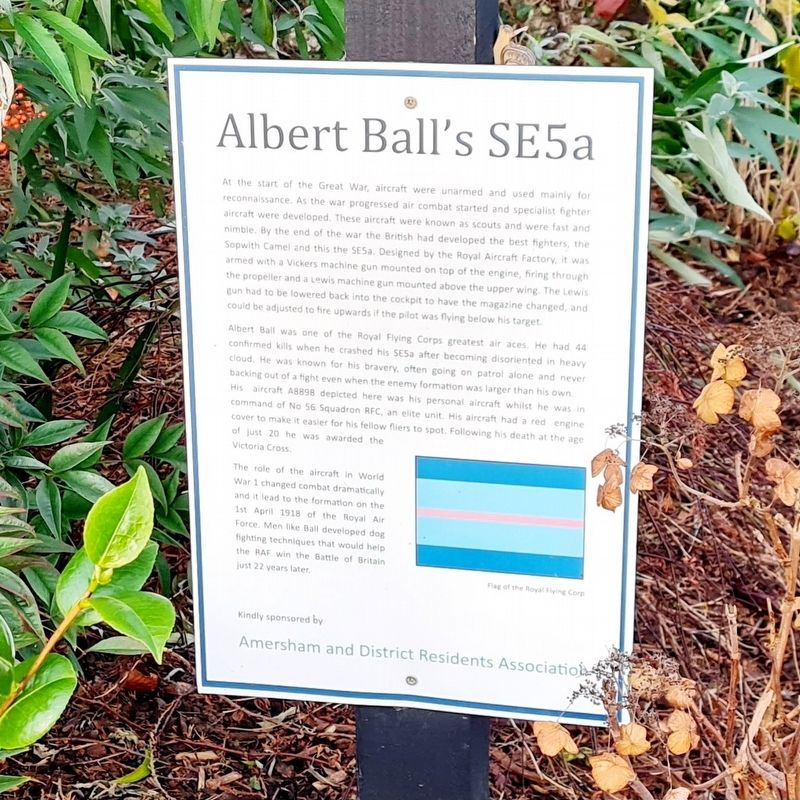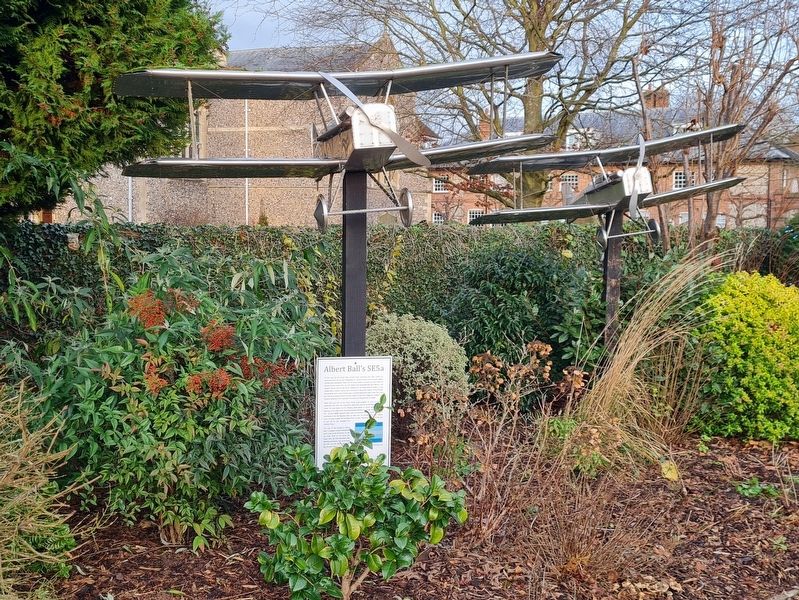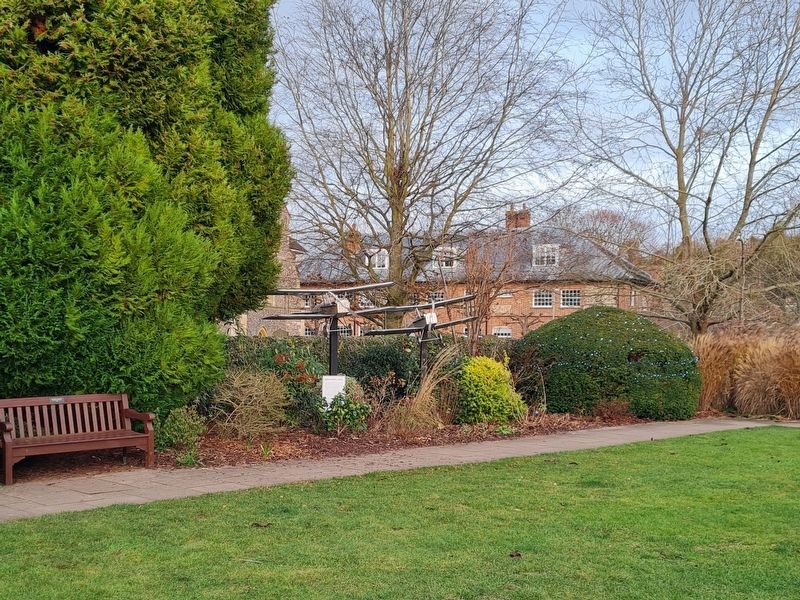Amersham in Buckinghamshire, England, United Kingdom — Northwestern Europe (the British Isles)
Albert Ball's SE5a
At the start of the Great War, aircraft were unarmed and used mainly for reconnaissance. As the war progressed air combat started and specialist fighter aircraft were developed. These aircraft were known as scouts and were fast and nimble. By the end of the war the British had developed the best fighters, the Sopwith Camel and this the SE5a. Designed by the Royal Aircraft Factory, it was armed with a Vickers machine gun mounted on top of the engine, firing through the propeller and a Lewis machine gun mounted above the upper wing. The Lewis gun had to be lowered back into the cockpit to have the magazine changed, and could be adjusted to fire upwards if the pilot was flying below his target.
Albert Ball was one of the Royal Flying Corps greatest air aces. He had 44 confirmed kills when he crashed his SESa after becoming disoriented in heavy cloud. He was known for his bravery, often going on patrol alone and never backing out of a fight even when the enemy formation was larger than his own. His aircraft A8898 depicted here was his personal aircraft whilst he was in command of No 56 Squadron RFC, an elite unit. His aircraft had a red engine cover to make it easier for his fellow fliers to spot. Following his death at the age of just 20 he was awarded the Victoria Cross
The role of the aircraft in World War I changed combat dramatically and it lead to the formation on the 1st April 1918 of the Royal Air Force. Men like Ball developed dog fighting techniques that would help the RAF win the Battle of Britain just 22 years later.
Erected 2018 by Amersham and District Residents Association.
Topics and series. This historical marker is listed in these topic lists: Air & Space • War, World I. In addition, it is included in the Victoria Cross and George Cross Recipients series list.
Location. 51° 39.986′ N, 0° 36.919′ W. Marker is in Amersham, England, in Buckinghamshire. Marker can be reached from The Broadway. Marker is in the north west corner of the Remembrance Garden. Touch for map. Marker is at or near this postal address: Garden of Remembrance, Amersham, England HP7 0HL, United Kingdom. Touch for directions.
Other nearby markers. At least 8 other markers are within 16 kilometers of this marker, measured as the crow flies. Centenary of the End of World War I (a few steps from this marker); WWII Memorial Plaque (within shouting distance of this marker); Welcome to Bell Rope Meadow (approx. 13.2 kilometers away); The Tarry Stone (approx. 13.4 kilometers away); Sir Stanley Spencer (approx. 13.5 kilometers away); Causeway Bridge (approx. 13.6 kilometers away); Cookham War Memorial (approx. 13.6 kilometers away); Marlow War Memorial (approx. 15.4 kilometers away). Touch for a list and map of all markers in Amersham.
Also see . . . Albert's Victoria Cross Citation.
Excerpt: "For most conspicuous and consistent bravery from the 25th of April to the 6th of May, 1917, during which period Capt. Ball took part in twenty-six combats in the air and destroyed eleven hostile aeroplanes, drove down two out of control, and forced several others to land."(Submitted on December 23, 2023, by Stephen Palmer of Ascot, England.)
Credits. This page was last revised on December 23, 2023. It was originally submitted on December 23, 2023, by Stephen Palmer of Ascot, England. This page has been viewed 46 times since then and 16 times this year. Photos: 1, 2, 3. submitted on December 23, 2023, by Stephen Palmer of Ascot, England. • Andrew Ruppenstein was the editor who published this page.


